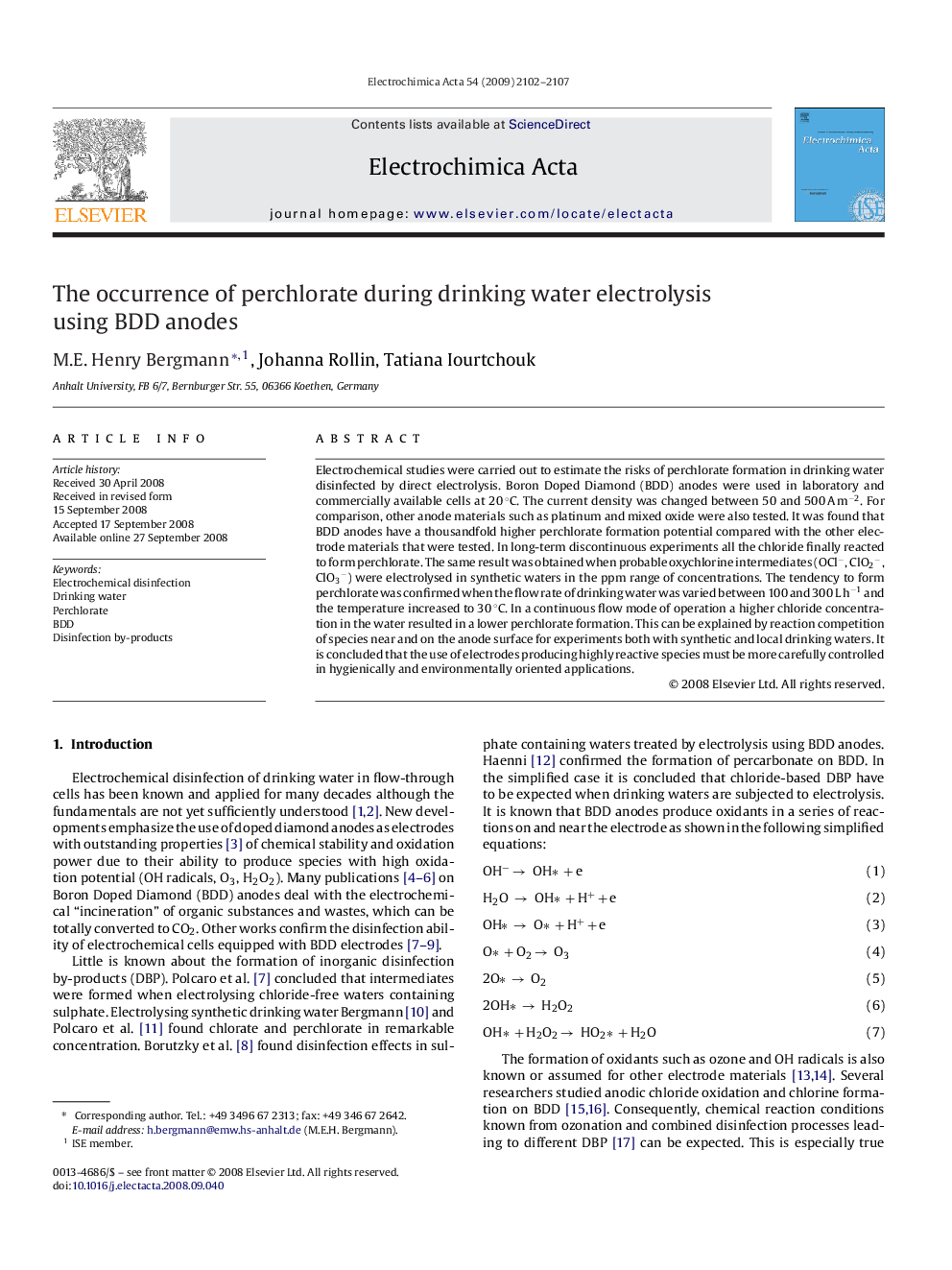| کد مقاله | کد نشریه | سال انتشار | مقاله انگلیسی | نسخه تمام متن |
|---|---|---|---|---|
| 193010 | 459758 | 2009 | 6 صفحه PDF | دانلود رایگان |

Electrochemical studies were carried out to estimate the risks of perchlorate formation in drinking water disinfected by direct electrolysis. Boron Doped Diamond (BDD) anodes were used in laboratory and commercially available cells at 20 °C. The current density was changed between 50 and 500 A m−2. For comparison, other anode materials such as platinum and mixed oxide were also tested. It was found that BDD anodes have a thousandfold higher perchlorate formation potential compared with the other electrode materials that were tested. In long-term discontinuous experiments all the chloride finally reacted to form perchlorate. The same result was obtained when probable oxychlorine intermediates (OCl−, ClO2−, ClO3−) were electrolysed in synthetic waters in the ppm range of concentrations. The tendency to form perchlorate was confirmed when the flow rate of drinking water was varied between 100 and 300 L h−1 and the temperature increased to 30 °C. In a continuous flow mode of operation a higher chloride concentration in the water resulted in a lower perchlorate formation. This can be explained by reaction competition of species near and on the anode surface for experiments both with synthetic and local drinking waters. It is concluded that the use of electrodes producing highly reactive species must be more carefully controlled in hygienically and environmentally oriented applications.
Journal: Electrochimica Acta - Volume 54, Issue 7, 28 February 2009, Pages 2102–2107